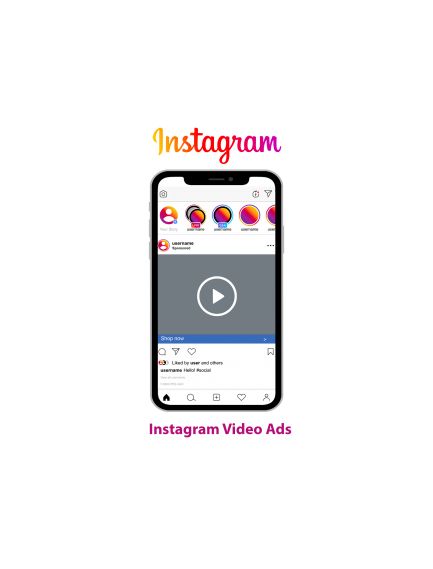Effective communication has become the cornerstone of any successful business. Whether it's to strengthen your brand image, launch an innovative new product, or retain your existing customers, a well-structured communication plan is essential to achieving your strategic goals. But how do you design this crucial plan that will guide all your communication actions? In this comprehensive guide, we will walk you through, step by step, how to write a communication plan that will propel your business to new heights.
What is a communication plan?
Before diving into the details of creating a communication plan, it is essential to understand this concept. A communication plan is more than just a document: it is a true strategic compass that guides all your communication efforts.
In concrete terms, it is a strategic document that clearly and precisely defines:
- The communication objectives of your organization
- The key messages you want to convey
- The target audiences you want to reach
- The communication channels you will use
- The schedule of your communication actions
- The budget allocated to each action
This plan serves as a roadmap for all your communication activities, ensuring consistency and effectiveness in delivering the company's messages. It ensures that all stakeholders in your organization are on the same page regarding the communication strategy.
The benefits of having a well-defined communication strategy
Before diving into the details of creating a communication plan, it is important to understand why having one is so crucial. Here are the main benefits:
Clarity of objectives: A well-defined plan allows the entire team to understand and work towards common goals. This prevents scattered efforts and ensures that each communication action contributes to achieving the company's overall objectives.
Consistency of messages: It ensures that all communication channels convey consistent and aligned messages. This consistency strengthens your brand image and avoids confusion among your target audience.
Resource optimization: By planning in advance, you can allocate your time and budget efficiently. This helps avoid unnecessary expenses and maximize the return on investment of your communication actions.
Measuring results: A well-structured plan facilitates the tracking and evaluation of the effectiveness of your communication efforts. This allows you to identify what works well and what needs adjustments.
Anticipation and responsiveness: With a clear vision of your strategy, you are better prepared to face unforeseen events and seize opportunities as they arise.
Alignment with overall strategy: A good communication plan aligns perfectly with the company's overall strategy, ensuring that your communication efforts support long-term business goals.
The steps to develop a communication plan
Now that we understand the importance of a communication plan, let's dive into the eight essential steps to creating one that is truly effective:
Step 1: Define your communication objectives
The first step, and probably the most crucial, is to establish clear and precise communication objectives. Your objectives should be SMART (Specific, Measurable, Achievable, Relevant, and Time-bound). This approach allows you to set concrete and achievable goals rather than vague aspirations.
Here are some examples of common objectives:
- Increase brand awareness by 20% in the next 6 months
- Boost social media engagement by 30% by the end of the year
- Generate 100 new qualified leads per month through content marketing
- Improve customer satisfaction by 15% over the next year
- Increase online sales by 25% in the next 12 months
It is important to note that your communication objectives should align with the overall objectives of your company. For example, if the overall objective is to increase market share, your communication objectives might focus on increasing brand awareness and generating leads.
Step 2: Analyze your target audience
For your communication to be effective, you need to know your audience inside and out. This step involves:
1. Identifying your audience segments: Divide your audience into distinct groups based on common characteristics such as age, gender, location, interests, purchasing behavior, etc.
2. Creating detailed personas: Develop fictional profiles representing your typical customers. These personas should include demographic, psychographic, and behavioral information.
3. Using analysis tools: Leverage tools like Google Analytics, customer surveys, social media analysis, and market studies to better understand your audience.
For example, if you are a natural cosmetics company, your personas might include:
- "Eco-Emma": A 25-35-year-old urban woman who is environmentally conscious and prefers organic and sustainable products.
- "Health-Sarah": A 35-45-year-old mother looking for healthy, chemical-free products for herself and her family.
- "Trendy-Tom": A 30-40-year-old man who cares about his appearance and seeks natural and effective skincare products.
The better you know your audience, the more you will be able to create messages that resonate with them and choose the most appropriate communication channels.
Step 3: Conduct a communication audit
Before planning your future communications, it is crucial to evaluate your past and current efforts. This step helps you understand what worked, what didn't, and where there is room for improvement. Here's how to proceed:
1. Analyze your past communications:
- Review your previous campaigns: What were the engagement rates? The returns on investment?
- Identify the messages that resonated best with your audience.
- Spot the channels that generated the most results.
2. Conduct a SWOT analysis of your current communication:
- Strengths: What are your communication assets?
- Weaknesses: Where are your points of improvement?
- Opportunities: What new possibilities can you exploit?
- Threats: What are the potential challenges or obstacles?
3. Competitive benchmarking:
- Analyze how your competitors communicate.
- Identify best practices in your industry.
- Spot opportunities for differentiation.
This audit will provide valuable insights to refine your strategy and avoid repeating past mistakes.
Step 4: Determine your key messages
Your key messages are the heart of your communication. They should be consistent, impactful, and aligned with your objectives. Here are some techniques for crafting effective messages:
1. Use storytelling: Create a narrative around your brand or products to create an emotional connection with your audience.
2. Highlight the benefits: Focus on what your product or service brings to your customers rather than its technical features.
3. Adapt the tone and style: Ensure that your language and tone match your brand and resonate with your target audience.
4. Be concise and memorable: Your key messages should be easy to understand and remember.
5. Ensure consistency: Your messages should be consistent across all your communication channels.
For example, if your company is launching a new line of eco-friendly products, your key messages could be:
- "Take care of yourself while taking care of the planet"
- "Natural beauty without compromising on effectiveness"
- "Pure ingredients, visible results"
Step 5: Choose your communication channels
There are many communication channels, both digital and traditional. The choice of channels depends on your audience and your objectives. Here is an overview of the options:
1. Digital channels:
- Company website and blog
- Social media (Facebook, Instagram, LinkedIn, Twitter, etc.)
- Email marketing
- SEO/SEM
- Online advertising
- Mobile apps
2. Traditional channels:
- Print media
- Radio
- Television
- Outdoor advertising
- Events and trade shows
- Direct marketing (postal mail)
3. Internal channels:
- Intranet
- Internal newsletters
- Team meetings
- Internal displays
To choose the right channels, consider where your audience spends the most time and which channels are most appropriate for your messages. For example, if you are targeting professionals, LinkedIn might be more relevant than Instagram. If you are targeting a local audience, radio and local outdoor advertising might be effective.
Remember that using multiple channels in an integrated manner (multichannel or omnichannel approach) often yields better results than a single channel.
Step 6: Establish a communication schedule
A well-structured schedule is essential for consistent and regular communication. Your schedule can be:
1. Weekly: Ideal for social media posts, blog updates, newsletters.
2. Monthly: For email campaigns, recurring events, monthly reports.
3. Annual: For major campaigns, product launches, annual events.
Here are some elements to include in your schedule:
- Publication dates for each type of content
- Seasonal or event-related campaigns
- Product or service launches
- Important industry events
- Holidays and celebrations relevant to your brand
Make sure to include key dates in your industry and relevant seasonal events. Use project management tools like Trello, Asana, or a simple Google Calendar to organize and visualize your schedule.
Step 7: Define your budget
Each communication action has a cost, whether in terms of money, time, or human resources. It is crucial to define a realistic budget that covers all aspects of your plan. Here is an example of budget allocation:
- Content production: 30%
- Paid advertising: 25%
- Public relations: 20%
- Events: 15%
- Tools and technologies: 10%
This allocation can vary depending on your specific goals and industry. For example, a B2B company might allocate more budget to events and content marketing, while a consumer brand might invest more in advertising and social media.
Don't forget to plan a margin for contingencies, usually around 10% of the total budget. This will allow you to seize unexpected opportunities or face unforeseen challenges.
Step 8: Measure the performance of your communication plan
Measuring results is crucial for evaluating the effectiveness of your plan and adjusting it if necessary. Here are some key performance indicators (KPIs) to track:
1. For social media:
- Engagement rate (likes, comments, shares)
- Subscriber growth
- Post reach
2. For email marketing:
- Open rate
- Click-through rate
- Conversion rate
3. For the website:
- Traffic (number of visitors, page views)
- Bounce rate
- Conversion rate
4. For press relations:
- Number of media mentions
- Equivalent advertising value of media coverage
- Tone of mentions (positive, neutral, negative)
5. For advertising campaigns:
- Return on investment (ROI)
- Cost per click (CPC)
- Cost per acquisition (CPA)
Use tools like Google Analytics, integrated analytics from social media platforms, and press tracking software to collect this data. It is important not only to collect this data but also to analyze it regularly to gain insights and adjust your strategy accordingly.
Writing an effective communication plan requires a methodical and thoughtful approach. By following these eight steps, you will be able to create a solid plan that guides your communication efforts towards success.
Remember that your communication plan should remain flexible: don't hesitate to adjust it based on the results obtained and changes in your environment. Communication is a dynamic field, and your ability to adapt quickly can make all the difference.
The key to a successful communication plan lies in its consistent implementation and continuous evaluation. Each action, each message, each campaign is an opportunity to learn and improve your approach. By closely monitoring your KPIs and staying attuned to your audience, you can refine your strategy over time for ever-improving results.
Also remember that communication is not a one-way process. Encourage feedback from your audience and be ready to engage in genuine dialogue. This approach will not only improve your communication but also strengthen your relationship with customers and stakeholders.
Finally, remember that creating a communication plan is only the beginning. Its implementation requires discipline, creativity, and perseverance. But with a solid plan as your foundation, you will be well-equipped to tackle your company's communication challenges and achieve your business goals.
To further deepen your knowledge on the communication plan, we also recommend checking out our detailed article on the essential tools for creating a communication plan.




 Top 30 best ads musics
Top 30 best ads musics
 The influence of advertising on purchasing behavior
The influence of advertising on purchasing behavior
 Top of the most listened podcasts in France
Top of the most listened podcasts in France
 Top 30 best ads 2021 in France
Top 30 best ads 2021 in France
 This Year Marketing Calendar
This Year Marketing Calendar
 Facebook Ads Library: The ultimate guide to winning campaigns
Facebook Ads Library: The ultimate guide to winning campaigns
 How to prepare your advertising campaigns for Christmas?
How to prepare your advertising campaigns for Christmas?
 The top 20 ad films of the year
The top 20 ad films of the year
 Example of a unique selling proposition
Example of a unique selling proposition
 Advertising storyboard: how to structure your campaigns
Advertising storyboard: how to structure your campaigns











